Ruben van de Boel (TU Delft), Robin Breedeveld (University of Cape Town), Lejla Adami (University of Birmingham), Hajar El Bakkari (University Mohammed V of Rabat), Sandra Tikale (University of Cologne)

Download the pdf version of the blog
In Biking Across Borders, we take you on a biking trip around the world. Not only are we crossing national borders, but you will also see the different social boundaries present in biking in different countries. On your trip, you will learn that inequality, safety and cultural attitudes hugely influence biking culture. Despite the social boundaries, the implementation of a good biking infrastructure by the government greatly encourages biking and therefore more environmentally friendly ways of traveling.
Biking across borders
Cycling is good for the environment. But, to what extent can people throughout the world use this mode of transport? We would like to invite you on a global bicycle tour: you are going to bike across many borders! Pay extra attention to how safety and inequality in different contexts influence your cycling experience.
Delft, The Netherlands
Your journey starts in the Netherlands, at the train station in Delft. Wherever you look, you see bikes parked and people cycling. The infrastructure is pretty much perfect, all the bike lanes are safe, flat, well-maintained, and have great signage. Getting around feels convenient, everything is nearby and no cars get in the way.
Yet, there is a lot to improve. On your way south, towards Rotterdam, an elderly woman that is cycling in front of you loses her balance and falls over, down the sloped verge of the dike into the ditch. She has a broken leg and will not be able to get around for the coming months. In the Netherlands, most accidents involving cyclists are single-vehicle accidents, meaning the cyclists injure themselves. Issues that are currently being addressed by the cycling association, are vertical curbs that should be sloped, sloped verges that should be horizontal and the so-called cycling poles without lights or rib marking. Infrastructure should be made in order to facilitate both young and old bikers.
Now, how do you get to a situation where infrastructure suffices? Here is what you learn from the Dutch, there are five criteria every network around the world should follow:
directness, comfort, safety, attractiveness, and coherency. Crossings can be a barrier or an opportunity to change your route. A bike lane should continue over the crossing, for safety, directness and coherence. If this is done properly it will look nice and can be driven on comfortably, without having to constantly look right and left for possible cars that are trying not to hit you.
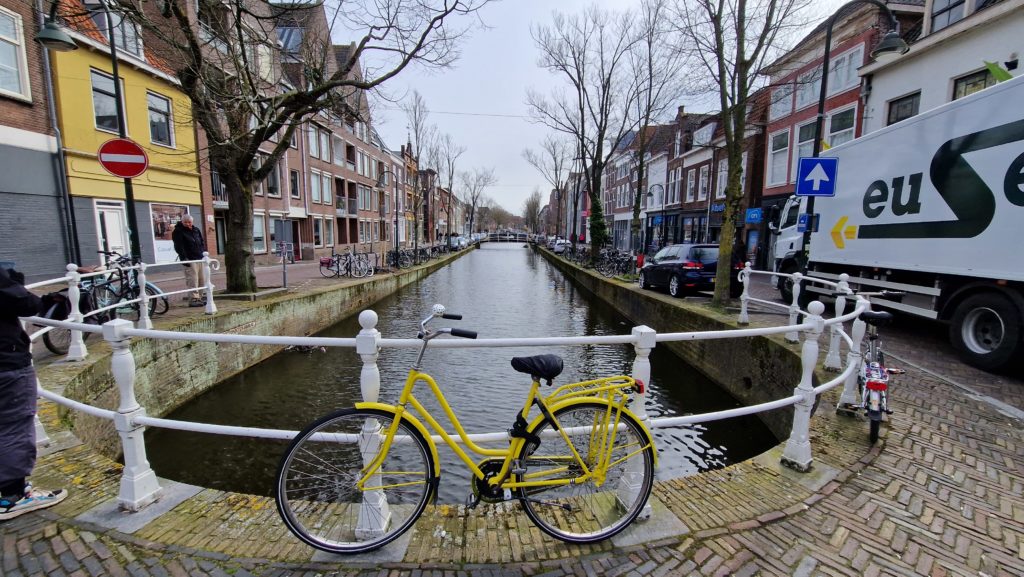
Tetovo, North Macedonia
Your next journey is to Tetovo, a city located in the western part of North Macedonia. As you are biking, you notice the narrow roads that are often congested, making it difficult for you to cycle. Even though you use the bike lanes (where available), you see how unfunctional they are for use and decide to take pictures of them that show the huge obstacles on the bike lanes.
Due to these challenges, you decide to ask some residents questions about biking in Tetovo. Out of the ten people you asked whether they feel safe when biking on the road, seven answered no. The main reason was that there were no practical bike lanes, and because of this improper infrastructure, people are often forced to share the road with motorised vehicles, which can be dangerous. Cycling is a budget-friendly, sustainable means of transportation that has many benefits for well-being. If cities like Tetovo would work on improving the infrastructure, more people would resort to bikes as a means of transport.
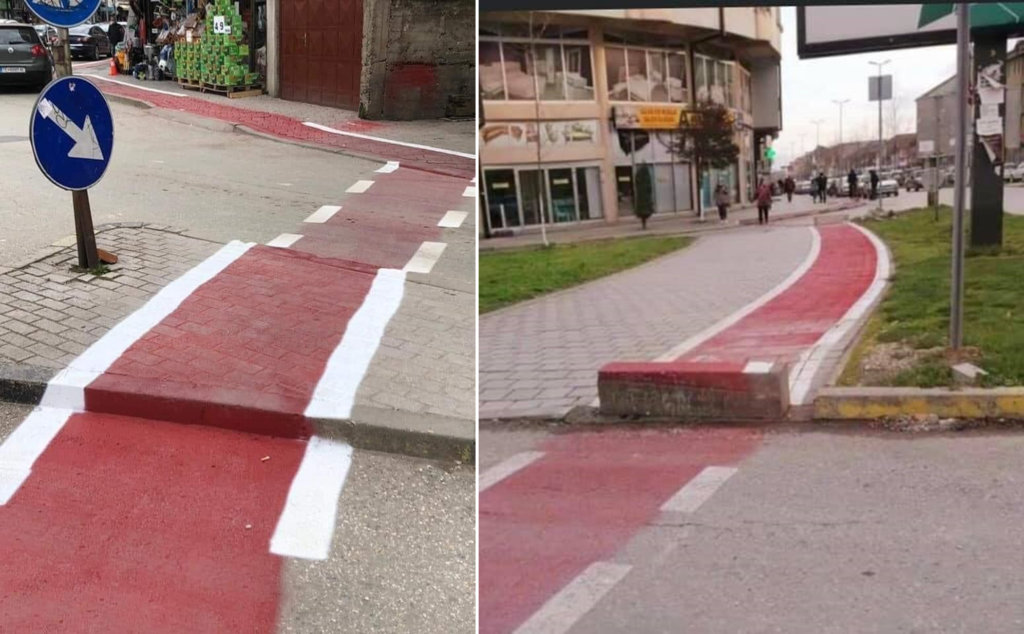
Rabat, Morocco
As you leave Tetovo, you now enter the African continent. In Morocco you notice that the cycling culture is struggling to take off because of a lack of infrastructure and because of the societal stigma attached to cycling. You hear that people’s reasons for cycling are not related to the environment or well-being. Instead, cycling in the city is seen as a marker of poverty, so it is related to the socio-economic situation of individuals. Cyclists that you speak to clarify that the bicycle is an option to avoid the expensive costs of transportation as well as an option to avoid a tiring walk.
As you cycle further into the city, you also find that bicycles are a means of making a living. In the streets of Rabat you meet men with bicycles collecting plastic, cardboard, leftovers of bread and vegetables from dustbins in order to sell them again. Most men practising this are homeless.
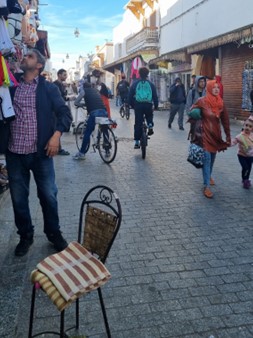
Despite that, you also meet passionate cyclists with whom you have interesting debates about environment, well-being and cycling. Said Bensat, a Moroccan living between France and Rabat told us that he dreams about a “Rabat 100% cycling city” where cycling paths are connected so he never leaves his electric bicycle.
Katima Mulilo, Namibia
When you enter Katima Mulilo, a town in the northeast of Namibia, you will see many men riding their bikes on the sand paths and narrow strips next to roads. At a meeting of a traditional authority you pass by, many of the almost exclusively male participants came by bike.
Where hitch-hiking is expensive and walking takes long, riding a bicycle facilitates access, for example to health care or markets. Riding further into rural areas you might notice bicycle ambulances that carry people in need of proper medical treatment. Or a farmer on an e-bike given to him by an NGO, on his way to his remote fields along wildlife corridors.
Bicycles can empower people and improve living standards. However, they are far from becoming a broad transportation solution here. Apart from general road safety issues, riding a bike is often seen as too dangerous for women. When speaking to local women, you find that cycling for them is not culturally rooted. One woman mentions it is not in her ‘tradition’. Even the customary clothing of women, a long folded skirt, is quite impractical for bike riding. Without seeing a single woman riding the bike here, you continue your journey.
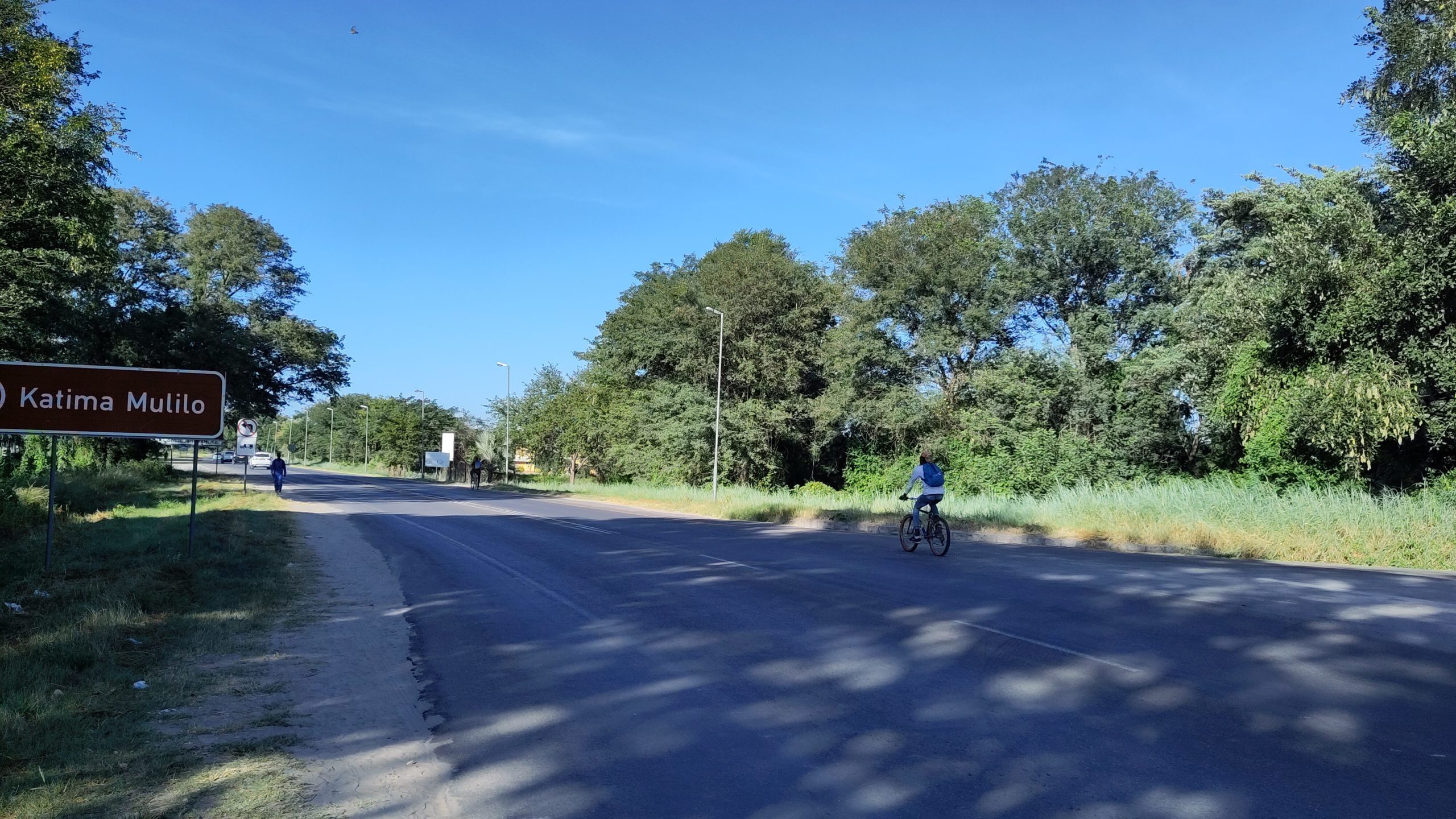
Cape Town, South Africa
You arrive at your final destination, the most Southern tip of Africa: Cape Town. You notice that Cape Town has a vibrant and touristy city centre, which spreads around the mountain and next to the sea. This part of the city has good and developed infrastructure, including bicycle lanes in many residential areas.
As you make your way through the affluent Southern Suburbs, you drive on a nice and well-maintained biking lane. Ahead of you is a highway, and the biking lane continues in a tunnel underneath the road. The closer you get, you start to notice however that you can not pass the tunnel as it is completely blocked with cardboard, iron sheets and tent sheets. Speaking to another fellow biker, you soon understand that this tunnel has been repurposed as a home by homeless people.
The further you move away from the Table Mountain, the more underdeveloped the cycling infrastructure becomes as we move into township areas where mainly people of low socio-economic background live. On your way, people warn you of robberies.
They say you should not cycle in certain areas because the roads are unsafe. You notice that residents barely cycle here, and they explain that maintaining bicycles is more expensive than using public transport. Some of them have never learned how to cycle.
Besides, distances in Cape Town are huge. Especially black people who live in the townships have to travel big distances to work. You learn that this is a legacy from apartheid, during which black people were forcibly moved to the townships, far away from the city centre.
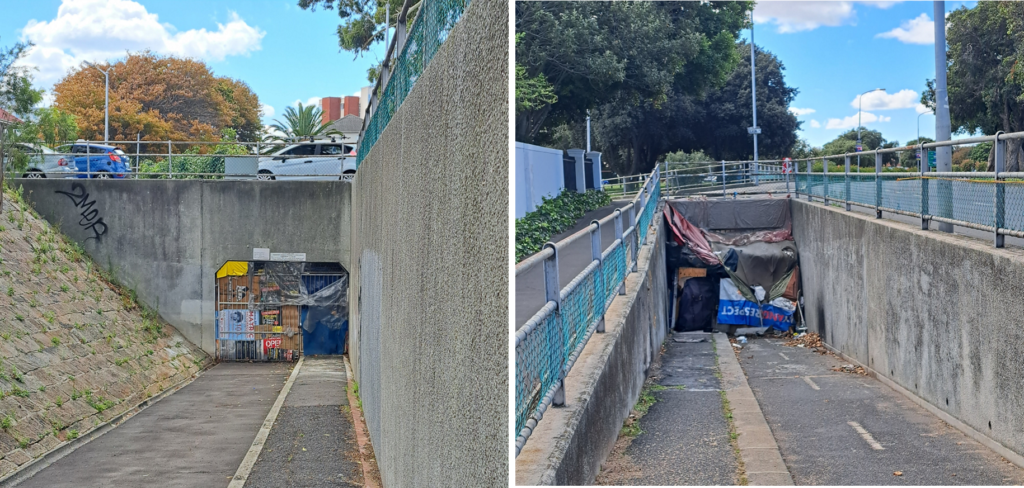
So… biking across borders?
When talking about cycling as an ‘environmentally just’ way of moving, inequality and safety have an immense influence on the extent to which we can use bikes to move around. In some instances, you learned that if the country implements a good and sufficient biking infrastructure, this can improve safety for bikers for example in the Netherlands and Tetovo.
However, in places with high crime rates such as in Cape Town, and inequality such as in Katima Mulilo, Rabat and Cape Town, biking can be unsafe or impossible because of social factors independent of the infrastructure. Despite that, city municipalities should invest in biking infrastructure. The implementation of infrastructure can have a positive effect on people’s attitudes towards cycling, which is environmentally friendly and has significant benefits to the transportation system of a city. Will this enable people to bike across social borders too?
About the authors
Ruben van de Boel – Hi, I’m Ruben! I recently completed my Bachelor of Architecture at the TU Delft in the Netherlands. My main interests in the field are management and sustainability. I am an advocate for inclusive and collaborative design. I think there is a lot of value in exploring the world and experiencing and developing different visions and contexts!
Robin Breedeveld – Hi! I am Robin, and I am a Master of Development Studies student at the University of Cape Town (UCT) in South Africa. I am currently in my final year, busy writing my thesis on how the militarisation of nature conservation in the Cape Flats affects local communities living next to the nature reserves. I did a BA in International Studies at Leiden University in the Netherlands, with a focus on the African continent. I enjoy doing research, I love academic consultancy and I like to tutor/teach on the side. I am primarily interested in political economy, political ecology, sociology, and the decolonization of knowledge, specifically in Eastern- and Southern Africa.
Lejla Ademi – I am Lejla Ademi from North Macedonia! I am currently pursuing my master’s degree in Air Pollution, Management and Control at the University of Birmingham! Before embarking on this journey, I studied Business and Economics and worked as a finance associate for five years! However, living in Tetovo, which is one of the most polluted cities in Europe, motivated me to switch my career path! Apart from my academic pursuits, I have a keen interest in reading and traveling! Exploring new places and gaining knowledge through books are some of the things that keep me going!
Hajar El Bakkari – I’m Hajar El Bakkari from Salé, Morocco. I studied physical sciences in the high school then a bachelor’s and a master’s degree in social and cultural anthropology at the National Institute of Archaeology and Heritage in Rabat. I worked in different fields during my educative years of high studies such as prehistoric and antique archaeological excavations, cultural and social research and fieldwork in different regions of Morocco. I am interested in culture, heritage, arts, environment… Before getting my actual job as a deputy curator in the Museum “La Kasbah for Mediterranean Cultures in Tangier”, I had many experiences and I’ve participated in different projects linked to the disciplines just mentioned. I love travelling, reading and music.
Sandra Tikale – Hi! My name is Sandra and I study Social and Cultural Anthropology at the University of Cologne, Germany. In my studies I focus on Environmental Anthropology, in particular sustainable agriculture. I love to learn about different perspectives and realities, both through actual encounters and reading and writing. From the people I have the pleasure to work together with, I have inherited a passion for compost, earthworms and transformations that heal more than they destroy.

Join the discussion
0 people are already talking about this, why not let us know what you think?